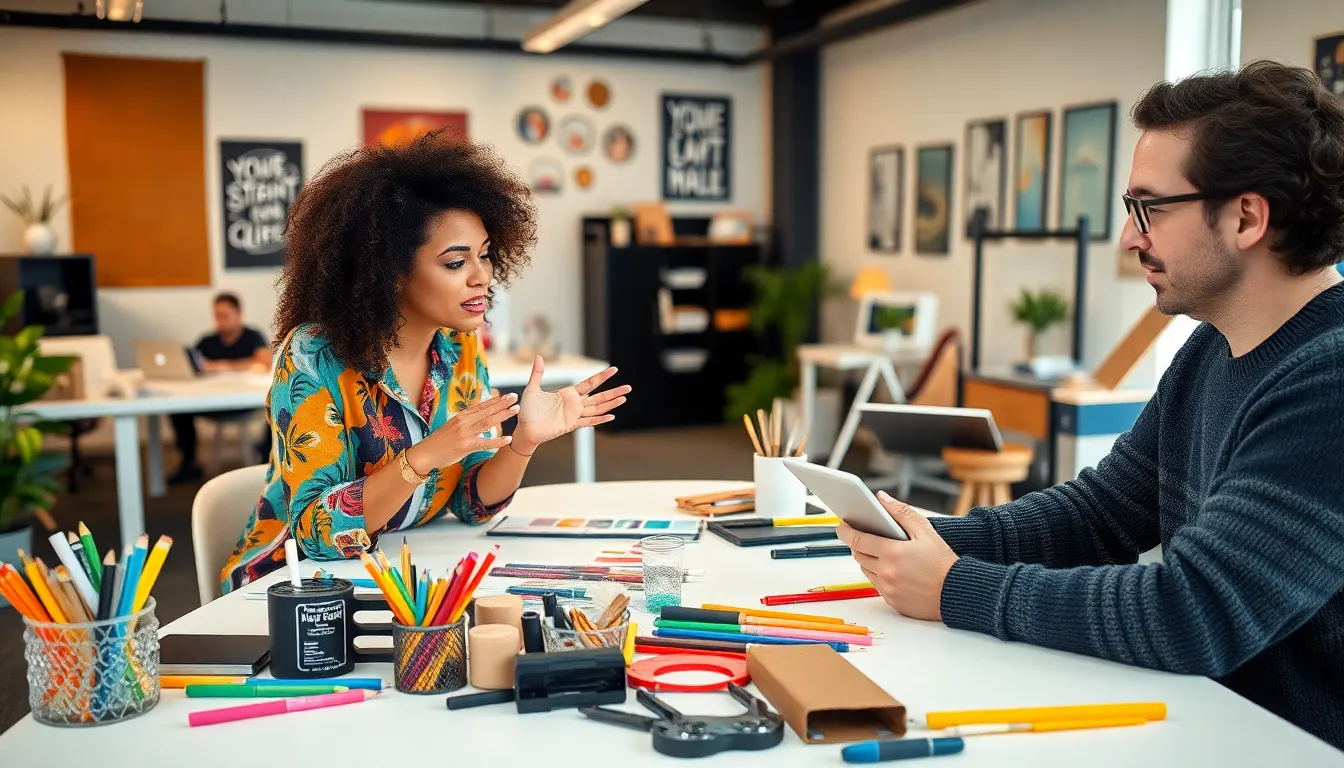Table of Contents
ToggleCreativity fuels innovation and drives progress in every field, from art to technology. In a world that often prioritizes conformity, fostering creativity is essential for personal growth and societal advancement. People thrive when they can express their unique ideas and perspectives, leading to breakthroughs that can change lives.
Encouraging creativity isn’t just about artistic endeavors; it’s about nurturing a mindset that embraces curiosity and exploration. Whether in schools, workplaces, or at home, creating an environment that values original thinking can unlock potential and inspire individuals to push boundaries. As society evolves, the ability to think creatively becomes increasingly vital, making the encouragement of this skill more important than ever.
The Importance of Encouraging Creativity
Encouraging creativity plays a crucial role in personal and societal growth. Creativity enhances problem-solving skills, leading to innovative solutions in various fields. It fosters independence and allows individuals to express unique ideas.
Workplaces that promote creative thinking experience improved collaboration and employee satisfaction. Schools that emphasize creativity help students develop critical thinking skills and prepare them for future challenges.
Creativity contributes to adaptability and resilience. Individuals who think creatively can adjust to changing environments and overcome obstacles effectively. Society as a whole benefits from a creative population, as it drives technological advancements and cultural evolution.
Ultimately, nurturing creativity unlocks individual potential, inspires innovation, and cultivates a more dynamic and progressive society.
Strategies for Encouraging Creativity

Encouraging creativity involves implementing effective strategies that foster an environment conducive to imaginative thinking. These strategies promote innovation and support personal and societal growth.
Creating a Supportive Environment
Creating a supportive environment includes establishing spaces that inspire creativity and facilitate exploration. Facilities should feature flexible layouts, allowing for collaboration and individual focus. Providing resources like art supplies or access to technology can also stimulate creativity.
- Provide resources: Offer materials and tools relevant to creative exploration.
- Encourage collaboration: Foster teamwork through group activities and brainstorming sessions.
- Celebrate creativity: Recognize and reward innovative ideas to boost morale and motivation.
- Facilitate open communication: Promote dialogue and feedback, ensuring everyone feels comfortable sharing thoughts.
Encouraging Risk-Taking
Encouraging risk-taking promotes a culture where experimentation and failure are seen as vital parts of the creative process. When individuals feel safe to take risks, they explore unconventional ideas without fear of judgment.
- Normalize failure: Highlight learning from setbacks as a valuable experience.
- Reward attempts: Recognize efforts regardless of outcomes to incentivize trying new approaches.
- Set challenges: Offer problem-solving tasks that encourage out-of-the-box thinking.
- Promote autonomy: Give individuals the freedom to pursue projects that align with their interests.
The Role of Education in Fostering Creativity
Education serves as a vital platform for nurturing creativity, equipping individuals with skills necessary for innovation. Creative development thrives through strategic teaching practices and experiential learning.
Innovative Teaching Methods
Innovative teaching methods empower students to embrace creative thought. Techniques such as project-based learning, flipped classrooms, and inquiry-based approaches encourage active participation.
- Project-based learning engages students in real-world problem-solving scenarios, allowing them to explore solutions creatively.
- Flipped classrooms shift traditional learning, enabling students to access content online and engage in interactive classroom activities centered around critical thinking.
- Inquiry-based approaches promote curiosity, inviting students to ask questions and discover knowledge through hands-on exploration.
These methods foster an environment that supports creativity and independent thinking, preparing students for future challenges.
Incorporating Play and Exploration
Incorporating play and exploration enhances creative thinking, particularly in early education. Structured play offers students opportunities to experiment and strategize in a low-pressure setting.
- Play-based learning encourages children to interact with materials, stimulating imaginative thinking and problem-solving skills.
- Explorative activities like nature walks or science experiments invite learners to investigate, observe, and draw conclusions based on their findings.
- Creative arts integration allows for self-expression through various mediums, facilitating personal exploration and enhancing cognitive flexibility.
Engaging in playful learning experiences builds a foundation that supports sustained creativity. This approach not only inspires enthusiasm for learning but also cultivates resilience and adaptability, essential traits in today’s dynamic world.
Overcoming Barriers to Creativity
Barriers like fear, self-doubt, and the fear of failure often stifle creativity. Addressing these issues directly encourages a more innovative mindset and helps individuals thrive.
Addressing Fear and Self-Doubt
Fear and self-doubt inhibit creative expression. Identifying the root causes of these feelings can aid in overcoming them. Encouragement and positive reinforcement play vital roles in this process. Providing constructive feedback boosts confidence and validates efforts. Creating an environment where individuals feel safe to share ideas without judgment fosters open communication. Additionally, setting small, achievable creative tasks helps individuals gradually build their confidence.
Combating the Fear of Failure
Fear of failure deters risk-taking in creative endeavors. Emphasizing that failure is part of the creative process encourages individuals to view setbacks as learning opportunities. Celebrating attempts, regardless of results, normalizes mistakes and reduces associated fears. Instituting brainstorming sessions focused on unconventional ideas promotes experimentation without immediate pressure for success. Offering mentorship and support structures enhances individuals’ willingness to take risks, reinforcing that creativity flourishes in an atmosphere of acceptance and exploration.
Encouraging creativity is essential for unlocking potential and driving progress. By fostering an environment that values curiosity and exploration, individuals can overcome barriers and embrace innovative thinking. Whether in schools or workplaces, the strategies outlined can help cultivate a culture of creativity that enhances problem-solving skills and collaboration.
As society continues to evolve, nurturing creativity will be vital for adapting to new challenges. By celebrating attempts and normalizing risk-taking, everyone can contribute to a more dynamic and resilient future. Embracing creativity not only enriches personal growth but also inspires collective advancements that benefit society as a whole.




